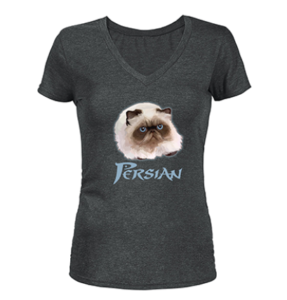Japanese Cat Myths

a funny t shirt featuring a cat
Cats are well-loved in Japan. For centuries, they’ve been the focus of Japanese folklore and myth. In Japanese military culture, there is a philosophy of a one-hit-kill. The ideal strike with a katana decapitates a foe in one blow. The ideal Judo throw ippons an opponent in one smooth motion. In each case, the idea is to attain victory in a single, perfect stroke. This philosophy, oddly enough, is exemplified by the common house cat. House cats pounce from tree branches, or leap into the air and intercept birds in mid-flight. They kill mice by toying with them and tiring them out for several minutes before delivering a single fatal strike. In a way, the cat fights in a manner that is congruent with Japanese martial philosophy.
Housecats have another side in the Japanese psyche, though. While they are seen as helpful and beneficent creatures, they also have a dark side. In Japanese folklore, there is a class of spirits called yokai. They’re also known as Mononoke, a word you may recognize from the name of a popular anime series. Yokai are sometimes good spirits, but just as often, they are mischievous or downright malevolent. And there are several kinds of cat yokai.
One such yokai is the nekomata. Nekomata originated in Chinese folklore. After about six centuries, they began to appear in Japanese folklore as well. There are many different kinds of nekomata and they have different properties depending on what period in Japanese history the legend comes from. One such legend claims that nekomata occur when domestic cats grow old enough to transform into fiendish and mischievous cat yokai. Some nekomata are created when ordinary cats run away to live in the mountains. As they grow older, they begin to stand on two legs and acquire human-like intelligence. They also grow an additional tail. Some nekomata retain the appearance of domestic cats except for the two tails. These nekomata can cause poltergeist activity in a person’s house.
Another example is the bakeneko. This cat yokai is similar to the nekomata. It is distinct from the nekomata in that it only has one tail. The bakeneko is a cat yokai that is known for displaying human-like characteristics. It sometimes walks on two legs or dances. It can also sing or speak like a person, possess people like an evil spirit, and control wildlife, such as wolves.
In both cases, cats are commonly seen as yokai because of the difficulty of domesticating them. Consider the contrast to dogs. Dogs are easy to control and understand human emotions well. In fact, dogs are one of the only animals that can understand human facial expressions. Cats, however, are much more willful. Whereas dogs are thoroughly domesticated, cats are always just on the edge of being wild again. The cat has a certain mystique: borderline feral and capable of dispatching its prey in a single elegant blow. It’s no wonder they’re so popular in Japan, where they can be seen in anime, on posters, and on funny t shirts.



